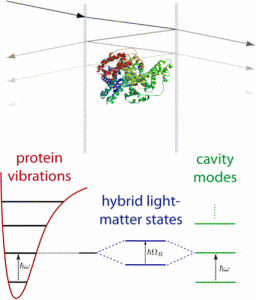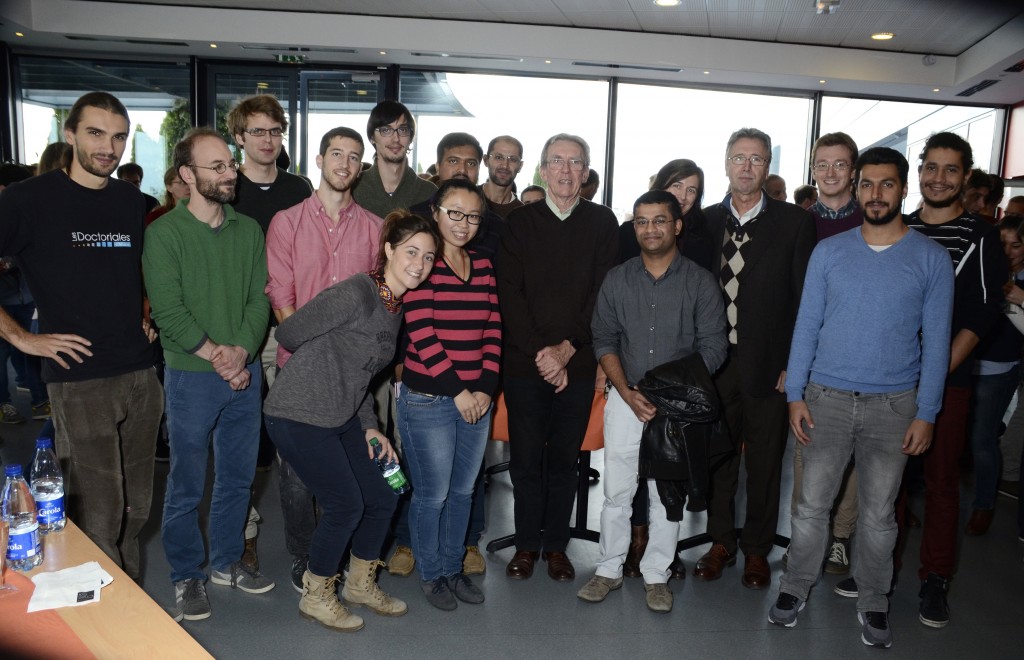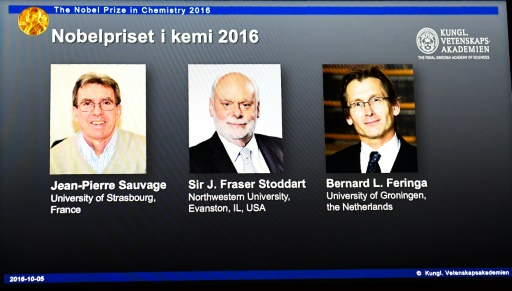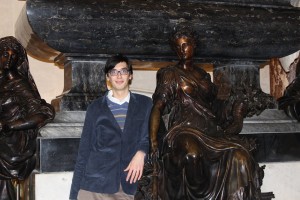Derek Lowe, publisher for Science Translational Medicine , has written a nice blog about our recent paper published in Angewandte Chemie, about ground-state chemical reactivity under vibrational strong-coupling. You can read the blog here, where you will also find links to other blogs about former results. And the paper itself is of course downloadable from the publications page of this site.
Author Archives: admin
How to modify molecular and material properties
Thomas Ebbesen has written a report for Accounts of chemical research about the notion of hybrid light-matter states and the consequences of their existence on the molecular and material properties. This is an overview of the recent results in this emerging field of research where exciting possibilities remain to be explored. The paper can be downloaded from our publications page.
A step further towards biomolecular systems
A new publication, resulting from our collaboration with Vladimir Torbeev appeared yesterday in the Journal of Physical Chemistry Letters. This work makes a bridge between quantum electrodynamics and biology, by showing the possibility of modifying the vibrational modes of proteins via strong-coupling. It opens the door to more studies involving the proteins vibrational dynamics and for example, how it affects enzyme catalysis and H/D exchange experiments. You can find the paper here or download it from our publications page.
Who is the intruder ?
To finish the week, a little picture of our group taken last Friday at ISIS. Our intruder is of course Jean-Pierre Sauvage, our Chemistry Nobel Prize new laureate. Once again, we congratulate him for this !
Welcome to Yoseline !
Yoseline Rosales Cabara joined our group on October 1st for starting a phD thesis on optical trapping under the supervision of Cyriaque Genet. She did her master degree in the University of Geneva, working on two-photon excited fluorescence by quantum correlated photon pairs. She is installed in room 120 and her email adress is rosalescabara (at) unistra (dot) fr.
Ultra-strong vibrational coupling bis
The paper on ultra-strong vibrational coupling mentioned in our post from September 9 has been published today, in the last issue of Physical Review Letters. You can read the final version here or download it from our publications page.
And the winner is…
You are probably already aware but we are glad to write one more time that our colleague Jean-Pierre Sauvage was awarded today the Nobel prize in chemistry for the development of molecular machines. He is sharing it with Prof. Fraser Stoddart, from Northewestern University, USA, and Prof. Ben Feringa, from University of Groningen, the Netherlands. Congratulations to all of them !
Atef is back
As we all miss him in the lab, our former postdoc Atef Shalabney, now in Braude College in Israël, will be back for a three weeks research stay from October 3rd. If you wish to meet him, he will be installed in room 107.
Mini symposium and PhD defense of Gabriel Schnoering
We are pleased to announce for next week a mini-symposium with two seminars on optical forces given by members of the PhD jury of Gabriel Schnoering:
Prof. Mikael KALL, from the Department of Physics, Chalmers University of Technology,Göteborg, Sweden, on Optically driven plasmonic nanorotors
and Prof. Romain QUIDANT from ICFO – The Institute of Photonic Sciences, Barcelona, Spain, on Nano-optomechanics with an optically levitated nanoparticle
This mini-symposium will take place in the conference room of ISIS, on Wednesday 21th of September at 3pm.
Then the next day, on Thursday 22. at 9.30am, Gabriel will defend his PhD thesis entitled On the Brownian dynamics of a particle in a bistable optical trap. This work has been done under the supervision of Dr. Cyriaque Genet and Prof. T.W. Ebbesen. A small reception will then follow at the 6th floor of ISIS.
May the (optical) force be with him…
Ultra-strong vibrational coupling
Here is a new paper accepted for publication in Physical Review Letters, where we demonstrate that a molecular vibration can be ultra-strongly coupled to multiple infra-red cavity modes, with Rabi splittings reaching 24% of the vibration frequencies. This effect induces a whole vibrational ladder of heavy polaritonic states perfectly resolved. The vibrational ultra-strong coupling regime, which impact both the optical and the molecular properties of the coupled systems, thus offers promising possibilities in particular in the context of mode-selective chemistry. For now, you can read our work on arXiv and also download it from our publications page.






